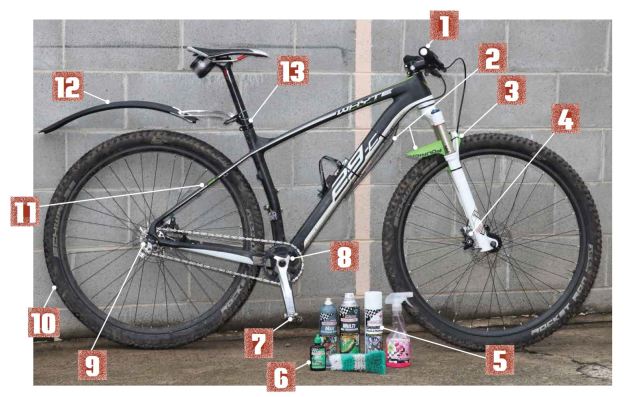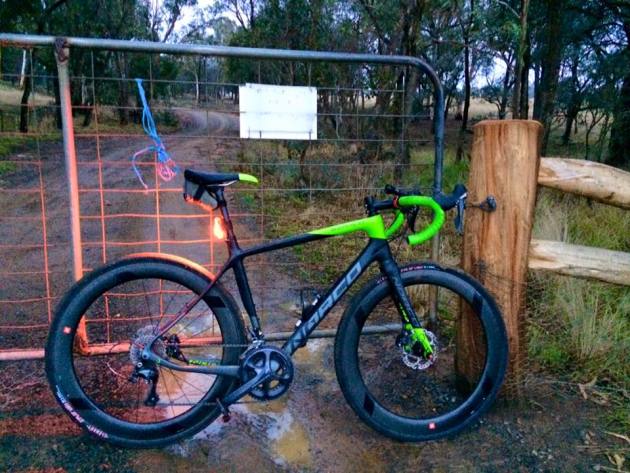ISOLATION BIKING: Get your bike ready for winter

1. Slippery throttle-like handlebar grips are dangerous. Either glue and wire your grips in place or better still, get some lock-on grips.
2. Fork fenders and frame mounted ‘crud catchers’ do a good job of keeping your face and vision mud free — the fork mounted guards also help to keep the muck off your fork seals.
3. After each ride, wipe down the inner legs/shock shaft with a clean damp rag. Once clean and dry, spray the inners with a suspension lubricant and cycle it a few times to get the seals moving freely. Be extra careful to ensure that none of the lube goes on your disc brakes (place a plastic bag over the rotor if you like).
4. Brake pad and rotor wear accelerates rapidly in the wet, so you should inspect them regularly. Make sure you use disc brake cleaner on the rotors after each bike wash and remove any dirt or contaminants.
5. Set yourself up with a bike care kit; degreaser, cleaner, a brush, bucket and sponge. Wash your bike after each muddy ride — it’ll only take five minutes if you’ve got the gear on hand. If you’re going to use a high pressure hose, take extra care not to point it at any bearings or suspension seals.
6. Choose a wet lube for wet conditions — makes sense doesn’t it! Yes it’s more likely to attract dirt but it’s better than riding with a squeaky fast-wearing chain.
7. Give your clipless pedals a good clean and drip some chain lube into the springs and any external moving parts — it may just save you from an embarrassing ‘spud crash’ on the trails.
8. Moisture can build up in the bottom bracket, leading to creaky noises and reduced bearing life. Intermittently remove and service your bottom bracket (this mightn’t be viable if your frame runs a press-fit system).
9. Wipe your drivetrain clean after every ride. A bit of degreaser on a rag will help to loosen any crud build up on the cogs. If you want the ultimate winter bike setup, rig yourself up a single speed or a Rohloff hub gear equipped bike (belt driven bikes are also great in the mud).
10. Relatively narrow tyres with widely spaced tread blocks less prone to clogging with mud and offer better traction as a result.
11. If you’re running gears, use a full-length outer housing to improve the lifespan of your gear cables.
12. Not really an essential item but frequent wet weather riders may choose to run a rear fender. Examples like this one from Klickfix are more likely to work, as the smaller saddle mounted ones don’t help when you’re off the seat.
13. Remove the seatpost once a month to give it a wipe clean. Apply some grease when you refit it to prevent seizing.
Don't Wreck the Trails
Unless your trails are built with wet weather use in mind (like many UK trail centres), or you’re the one doing the trail maintenance, it’s best to stay off any fragile MTB singletrack when it’s wet. As an alternative, try a road ride or stick to dirt roads and management trails that have been designed for much heavier vehicular traffic.
You could even roll your road and dirt track cycling together with one of the new generation ‘gravel’ or cyclocross bikes — the ideal N+1 bike purchasing excuse for winter!





